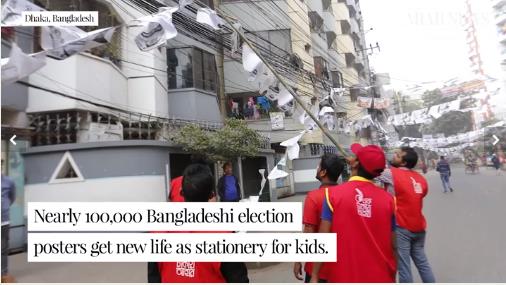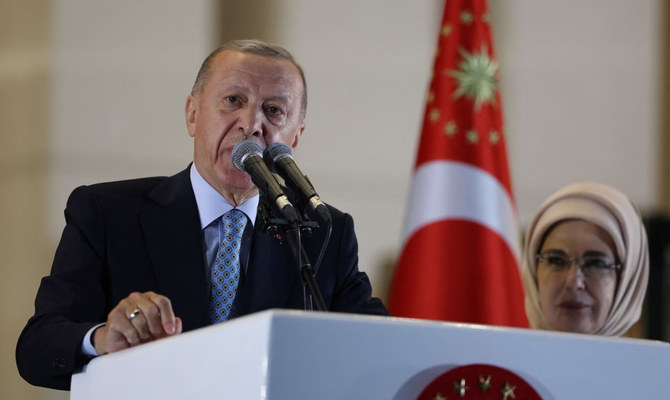
27,000 tonnes of campaign posters used in Bangladesh’s recent election
Bidyanondo Foundation workers gathered 100,000 posters from streets of 2 cities alone
DHAKA: Taped to the walls, fastened to fences, campaign posters were everywhere, littering the streets of Bangladesh before and after general polls.
They might have well remained there or headed to the landfill, but soon social workers stepped in to give them a new lease of life.
Some 27,000 tonnes of posters were used for last month’s election. When they were still hanging, with the photos of politicians smiling to voters, officials at one of the country’s biggest social welfare organizations, the Bidyanondo Foundation, were thinking of ways to prevent them from going to waste.
“Our main objective was to turn the waste into valuables ... Why should these posters remain as litter on the streets?” Abdullah Al-Mamun, the foundation’s spokesperson, told Arab News.
“People know our Bidyanondo as a differently thinking organization. Our ideas are always a bit out of the box.”
Days after the Jan. 7 polls ended, the organization’s volunteers started collecting the campaign litter from the streets of the capital, Dhaka, and the southeastern city of Chattogram.
By last week they had gathered 100,000 posters, some of which have already become notebooks for marginalized children under the organization’s care.
On the market, a notebook that would be enough for one month of classes, costs 100 Bangladeshi taka (around $1) — a price most children from marginalized groups would not be able to pay.
“If we calculate for 12 months of the year, this way it would save 1,000 taka per student. For a poor family of a rickshaw puller, 1,000 taka is a significant amount,” Al-Mamun said.
“We run seven orphanages and two schools, where there are more than 500 students ... Every year, we have to spend thousands of taka to buy writing notebooks, so we thought we could distribute these among our children.”
It takes 20 posters to make one notebook. So far, around 1,000 have been produced and are already in use.
Sumaya Akhter, a nine-year-old daughter of a rickshaw driver from a Bidyanondo-run school in Dhaka’s Mirpur, has already been writing in her notebook.
“I write Bengali, English, mathematics, and other subjects. I will also do drawings here,” she told Arab News.
She liked drawing village landscapes most, similar to her classmate Zahid Chowkider, who proudly showed the two drawings that he had already made.
“Another one, I just started. There is a home, tree, boat, cloud, sun, bird,” he said. “The paper of this notebook is good as it’s a little thicker, which is good for drawings.”












